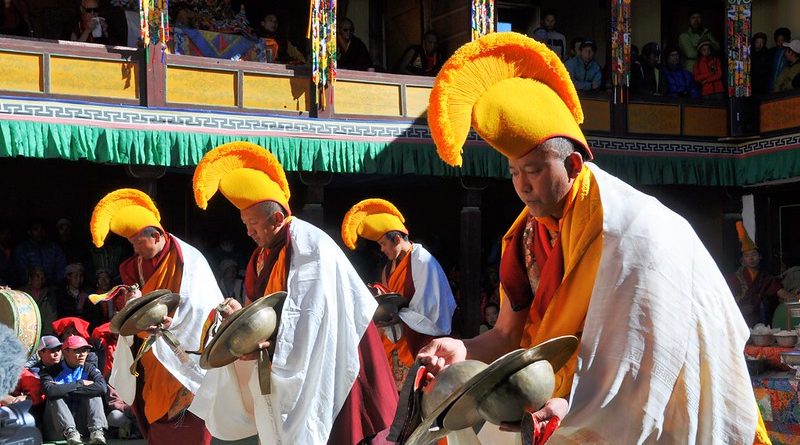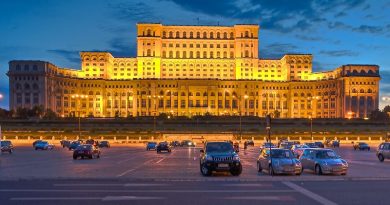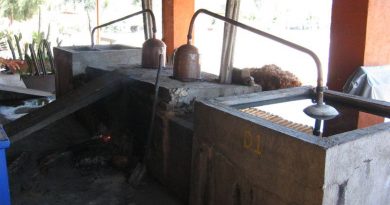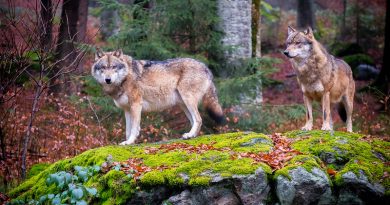Mani Rimdu Festival at Tengboche Monastery
History Facts
Where: Khumbu, northeast Nepal – foothills of Everest
When: October
Happenings: dances depicting the Buddhist victory over the ‘Bon’ religion
Other things to see: amazing wildlife, prayer flags, serenity and the first view of Mount Everest
In the Khumbu region of northeast Nepal, the home of the Sherpa people, lies the spectacular Tengboche Monastry. It is on the main route to the Base Camp of Mount Everest and offers the first clear views of the highest mountain in the world. Tengboche Monastery exhibits an important part of Nepal’s heritage.
What Happens at the Mani Rimdu Festival?
Apart from the fresh mountain air and the green-calm surroundings, the monastery also hosts the delightful Mani Rimdu Festival. The Mani Rimdu Festival is a festival of colour and noise that takes place in this most spectacular of settings. Performed by the monks of Chiwong and Tengboche monasteries, it depicts the victory of Buddhism over the ancient ‘Bon’ religion. Unchanged for centuries this is the annual full moon festival at the Tengboche Monastery.
The dances performed represent Buddhist destruction of all the pagan gods that live in the Himalayas. The monks all dress up in masks to represent the old ghosts that were exorcised.
The festival lasts for three days and is well attended by the Sherpa people who often trek for many days to witness this important event. Tengboche Mani Rimdu starts on the full moon of October, and the Chiwong Mani Rimdu on the full moon of November.
What’s the History of Tengboche?
Tengboche became known to the world after Sir Edmund Hillary and Tenzin Norgay (his Sherpa guide) made the first ascent of Mount Everest in 1953 from here. It was established in its present site by Lama Gulu in 1916 and has strong ties with the Rongbuk Monastery in Tibet. Tengboche was the first celibate monastery and follows the Nyingmapa lineage of the Vajrayana Buddhist teachings.
Tengboche has been destroyed and rebuilt twice. In 1934 an earthquake caused severe damage and on the 19th January 1989 the monastery burnt to the ground. The fire was so intense that nothing of worth could be recovered. Most of the monastery’s precious old scriptures, statues, murals and woodcarvings were lost, even the famous stone in which Lama Sangwa Dorje left a footprint cracked in the tremendous heat.
Other Things to See and Do
In days gone by, Tengboche monastery was remote and inaccessible. Today things have changed – over 30,000 people come every year to enjoy the beauty of Tengboche and splendor of the mountains.
In the quiet of the ancient forests surrounding Tengboche, the national bird of Nepal, the iridescentDhaphe (or Impeyan pheasant) can frequently be seen and heard. Huge vultures dominate the skies above. Yellow billed choughs and black ravens play on the winds. These wild high places are also inhabited by the tahr and goral, both rare species of wild goat antelope, as well as the endangered musk deer. There are many rare kinds of medicinal plants and sweet smelling incense scrubs. Tall rhododendron forests of many different species and colors adorn the landscape in spring. Rocks are carved into with prayers and bright flags hung in high places carry prayers of compassion skywards.
Most visitors walk to Tengboche by way of Namche Bazaar. The trek takes fourteen days from Jiri or three days from the airstrip at Lukla. Tengboche lies on a ridge at an altitude of 3,867 meters. From Tengboche there are spectacular views of some of the world’s highest mountains including Ama Dablam, Nuptse, Lhotse, Tamserku and Kantega. The ice walls of these mountains dominate the landscape and avalanches can frequently be heard rumbling high up the glaciers.
More Information
Welcome Nepal
The official tourist board website for Nepal with lots of practical information on visiting the cities and its sites of interest.
By Nitasha Kulashreshtha




